Wolves were the least surprising success story of the Premier League last season. Ever since the club’s ownership changed hands and Fosun International came on board in 2016, it has felt like a very well-thought-out plan was being implemented. Appointing Nuno Espirito Santo to mastermind their promotion from the Championship was one such move, along with the signings of players like Rúben Neves, Diogo Jota and João Moutinho. The owners’ close links with Jorge Mendes have undoubtedly helped in this regard, but Santo’s tactical acumen has had an even bigger role in ensuring that Wolves not only survived comfortably but made it as high as 7th in the league table, giving them a place in this season’s Europa League qualifiers. This tactical analysis scout report will look at Santo’s tactics from last season and how Wolves may set up for the season ahead.
Formations

As the image shows, Wolves primarily used two systems last season; 3-4-3 and 3-5-2. While Santo started the season with the 3-4-3, he switched to the 3-5-2 system around December, following a home win over Chelsea. This change allowed him to get an extra man into midfield in the form of new recruit Leander Dendoncker, while the strike partnership of Jota and Raúl Jiménez would prove to be a masterstroke. However, the core tactical principles remained the same between the two formations.
Use of width through wing-backs
Playing with a three-man defence usually means that any width must come from the wing-backs, and Wolves were no different. This was especially true once Nuno started using the 3-5-2; in the earlier 3-4-3, the likes of Hélder Costa, Ivan Caveleiro and Adama Traore played as the wide attackers, reducing the need for the wing-backs to get too high up the pitch. In this system, Matt Doherty and Jonny Otto were solely responsible for the side’s width when attacking, with the result that the duo would usually be high and wide up the pitch as a Wolves attack progressed –
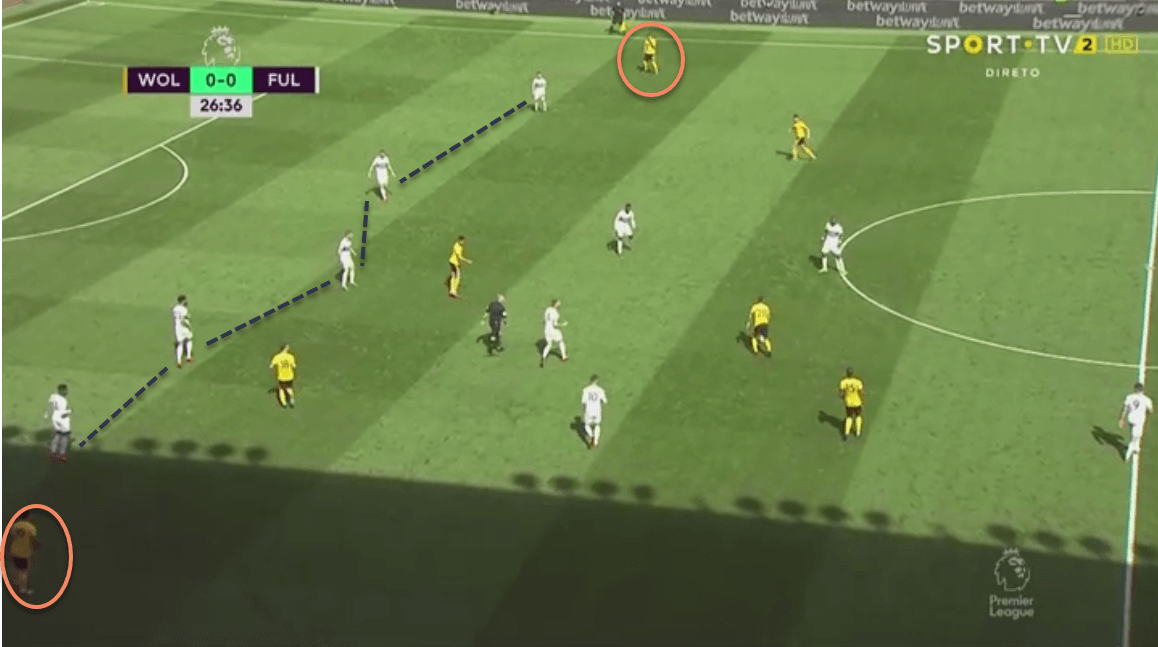
Doherty was the more direct of the two players, and his impact is brought out by the fact that he scored eight goals in all competitions from his wing-back position. He would often be an option for the Wolves centre-backs to hit with long passes, especially when faced against pressing sides like Manchester City and Liverpool –
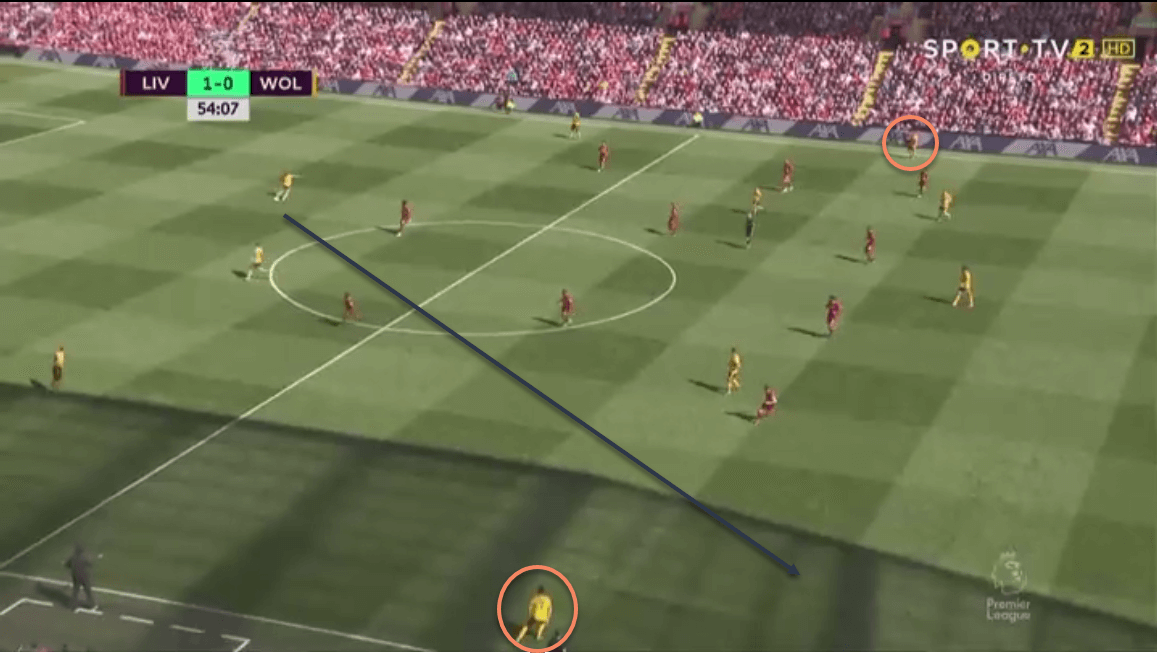
The two wing-backs’ positioning allowed Jota and Jiménez to play inside and occupy opposition centre-backs, while also creating space for runs from midfield. Defensively, they would drop back and form a back five, with Wolves usually not pressing from the front and playing a mid-block. The two outside central midfielders, usually Dendoncker and Moutinho, were responsible for moving out wide and dealing with opposition full-backs or midfielders, while Doherty and Jonny looked after the wide attackers –
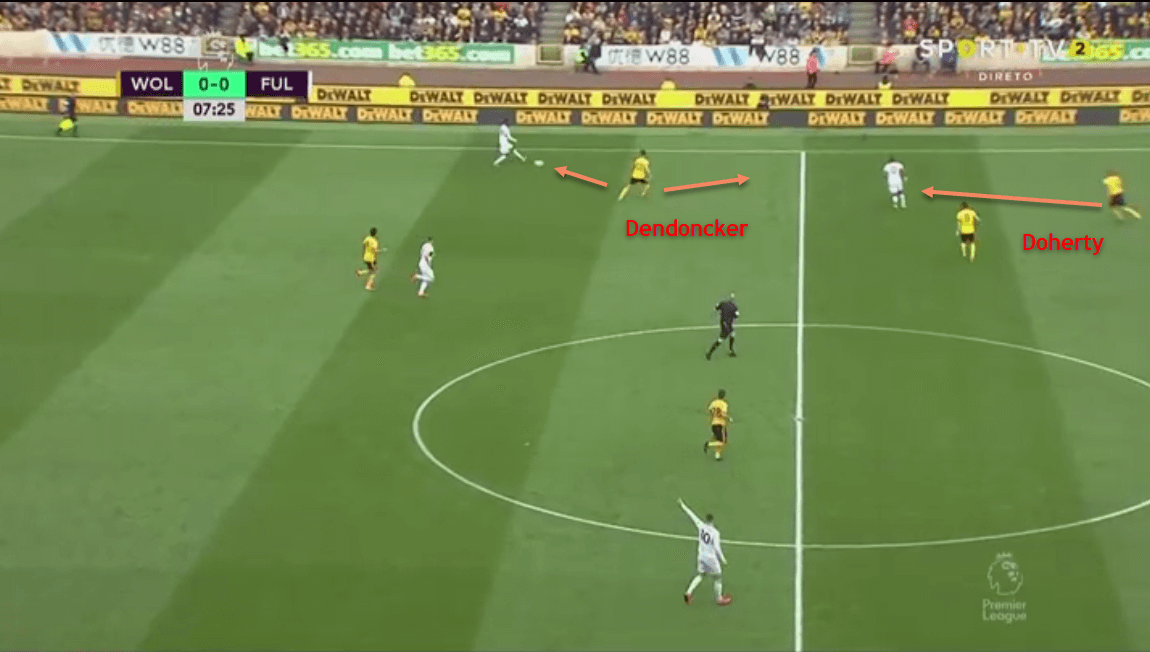
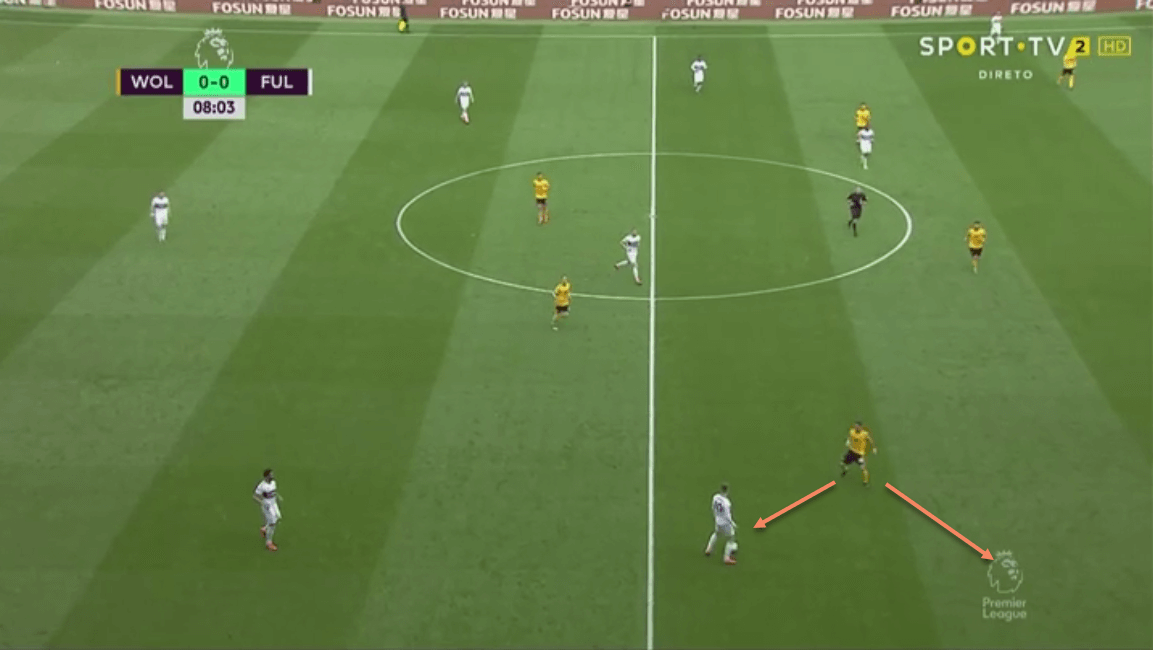
As mentioned previously, Wolves rarely pressed from the front, preferring to funnel the opposition into wide areas by maintaining a central block –
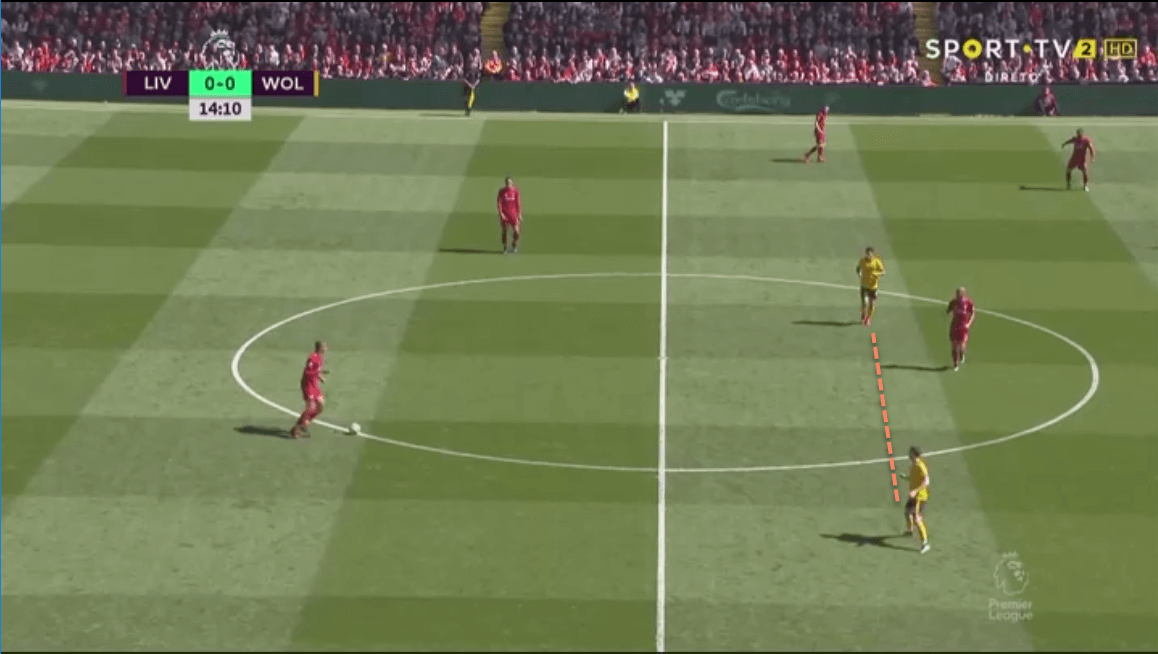
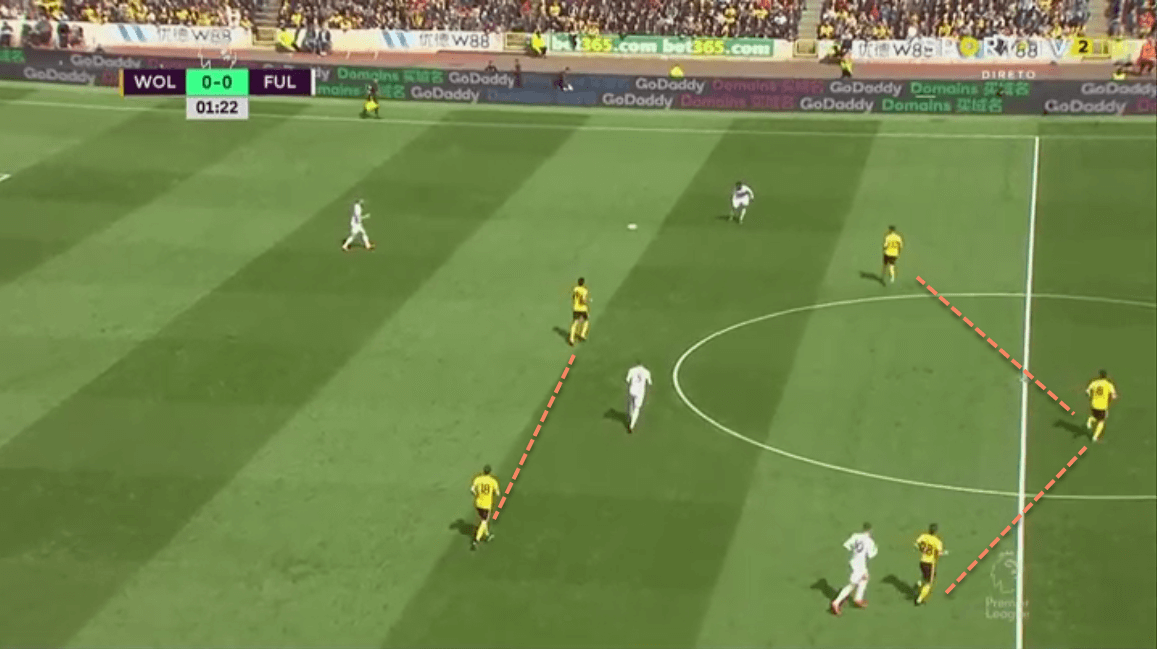
Dynamism in possession
Wolves had a defined structure in place for when they were on the ball as well. Doherty and Jonny could get high and wide up the pitch because Wolves had a de facto back four when in possession –
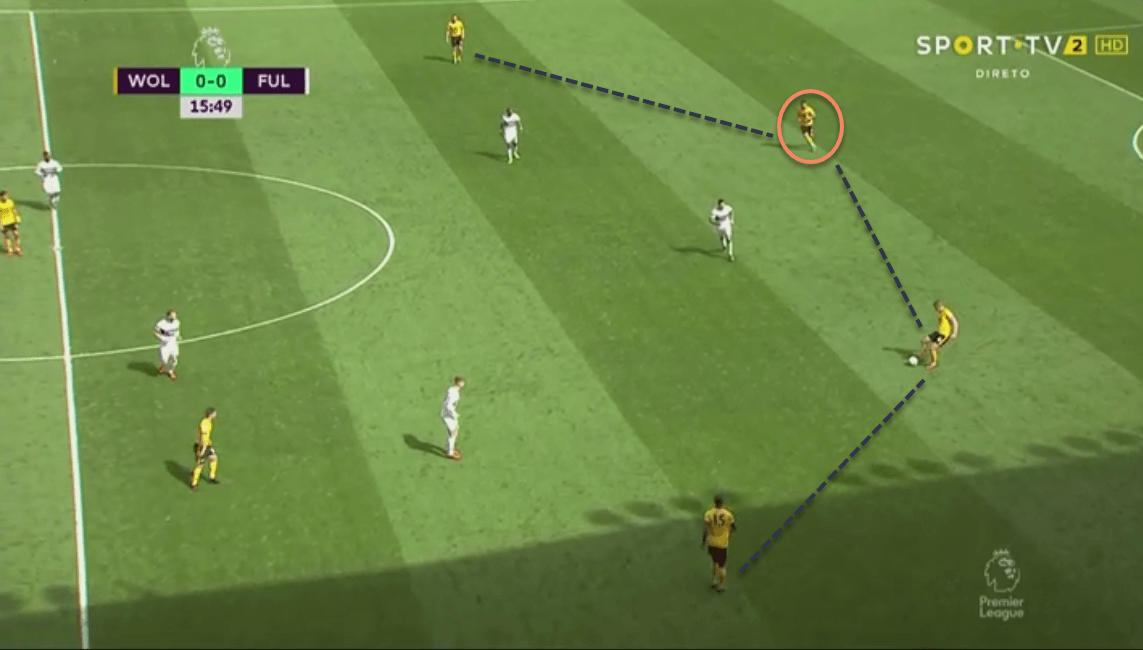
As shown, Neves would often drop back into the defence, which would allow the wing-backs to push forward. Neves was the pivot around which Wolves operated; he would be the deepest of the three midfielders, and the two outside midfielders would look to get into the half-spaces between the opposition midfielders and wingers. This would also allow the two Wolves strikers to play centrally and look to make runs outside into space to pull the opposition centre-backs out of position.
The two Wolves strikers were key to their attacking moves. Jota and Jiménez struck up an extremely productive partnership, with their movement and positioning dovetailing perfectly. If one would come deep, the other would stretch the backline by running in behind. If one went out wide, the other would stay central. Their understanding was a big reason for Wolves’ efficiency in front of goal, and with the Mexican’s stay having been made a permanent one, there is no reason why they cannot resume their partnership this season as well –
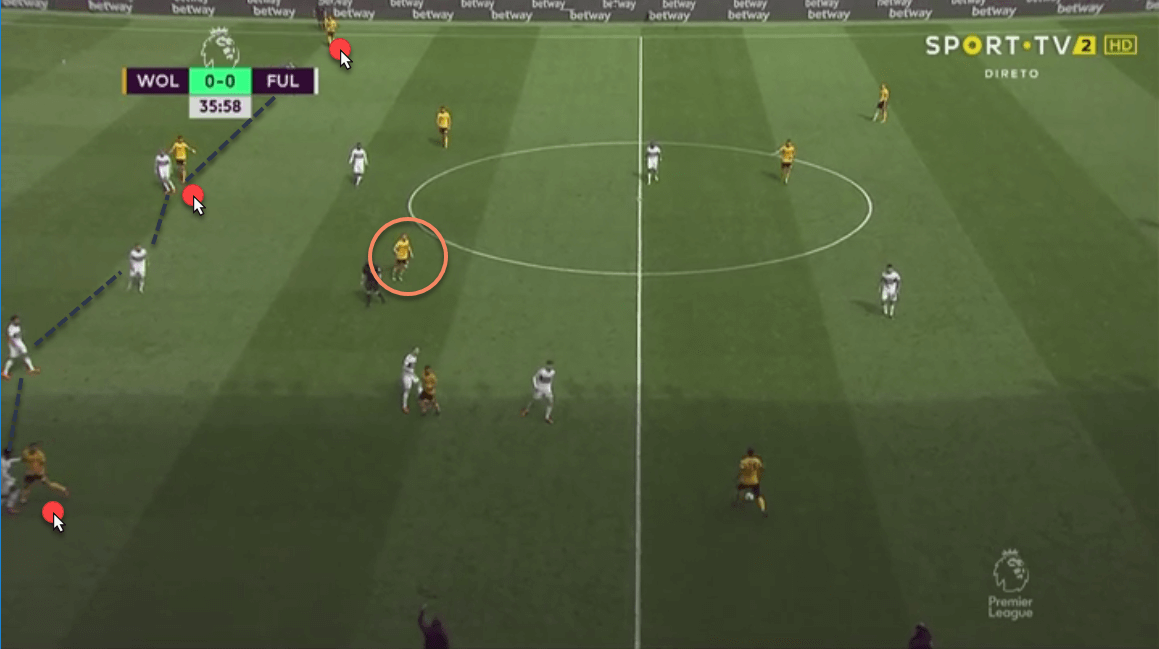
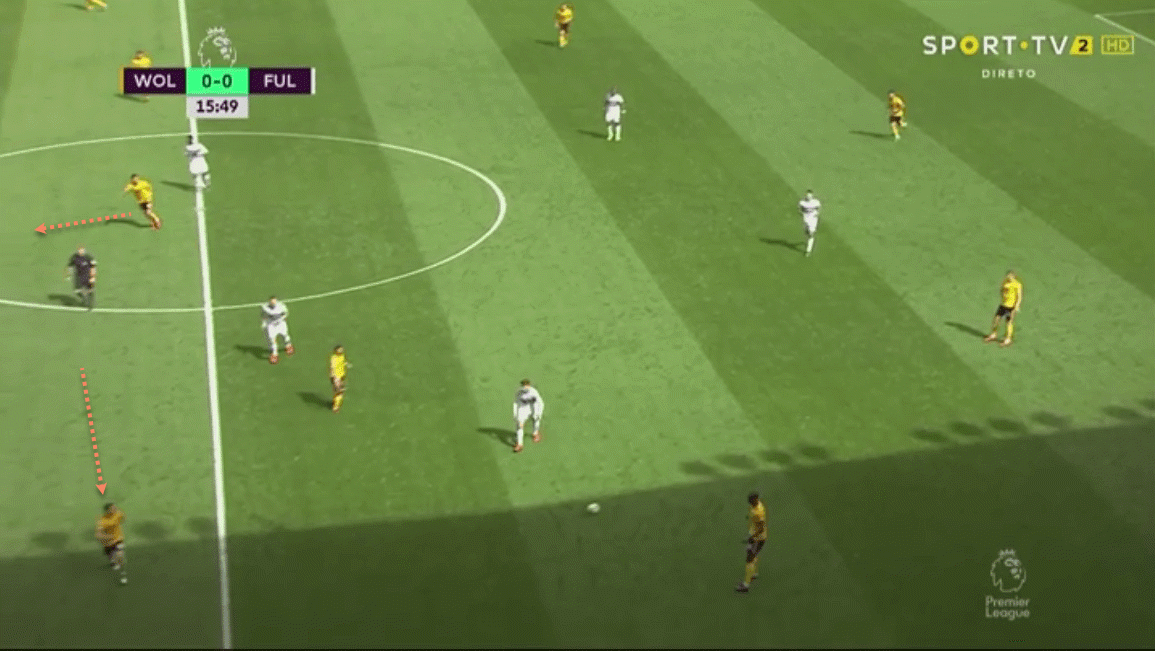
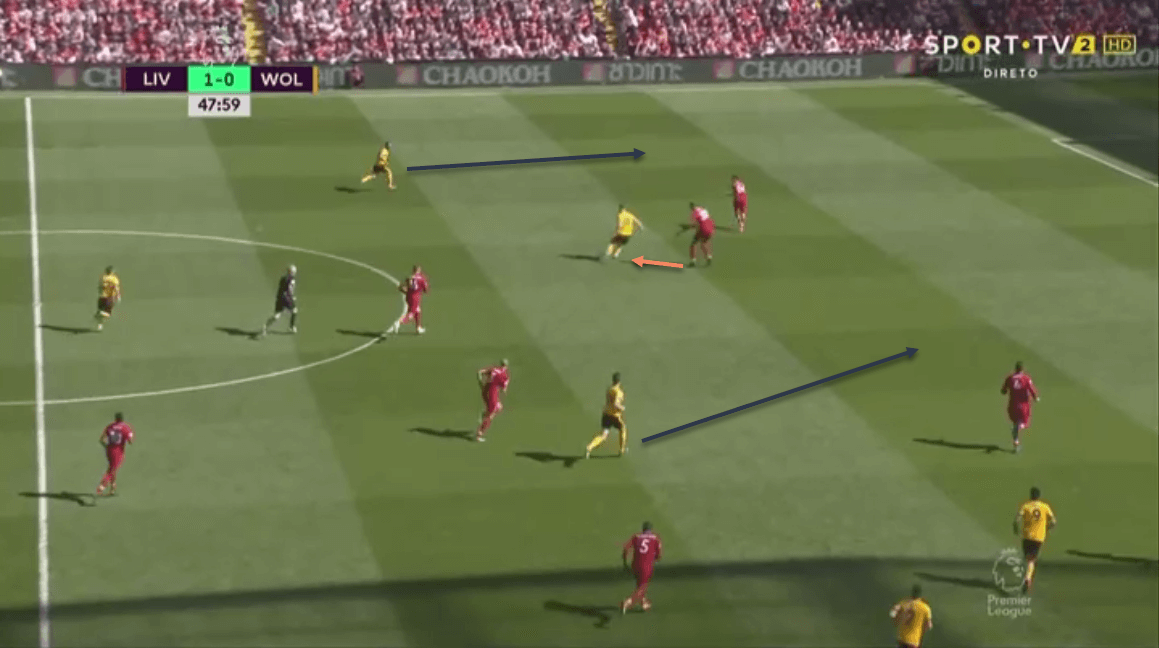
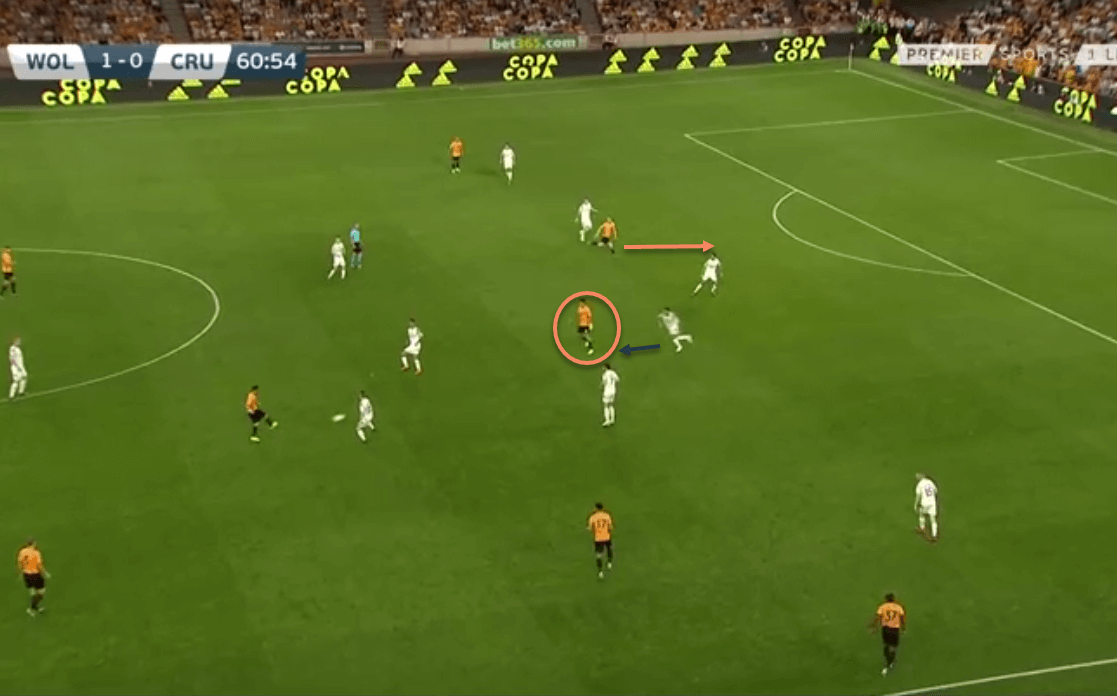
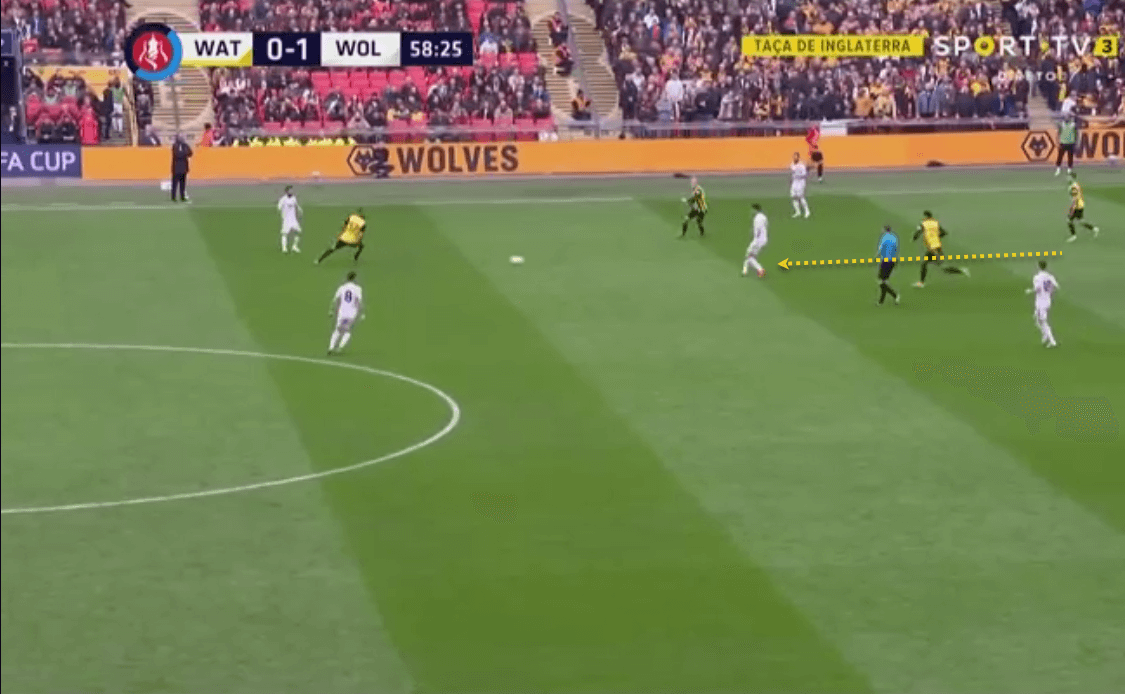
Jiménez’s physique and height meant that he would often play as a mobile target man, coming deeper to win headers and flick-ons, while Jota would be the runner in behind. However, these roles were not set in stone, as the images above show, and the duo made an extremely effective partnership due to their intelligence and the variety of movement that they showed.
New signings
While Wolves have moved quickly to make the loan deals of Jiménez and Dendoncker into permanent ones, they have also brought in a couple of new faces. Jesús Vallejo, the young Spanish centre-back, has joined on a season-long loan, while they have managed to get Patrick Cutrone in from AC Milan for a fee of a little over £16 million. While Vallejo will look to slot into the back three, potentially in place of Bennett, it is Cutrone who could be an extremely canny signing. He could potentially play as either Jota or Jiménez’s replacement in the side, with the young Italian exhibiting good movement whenever he was used as the focal point of Milan’s attack –
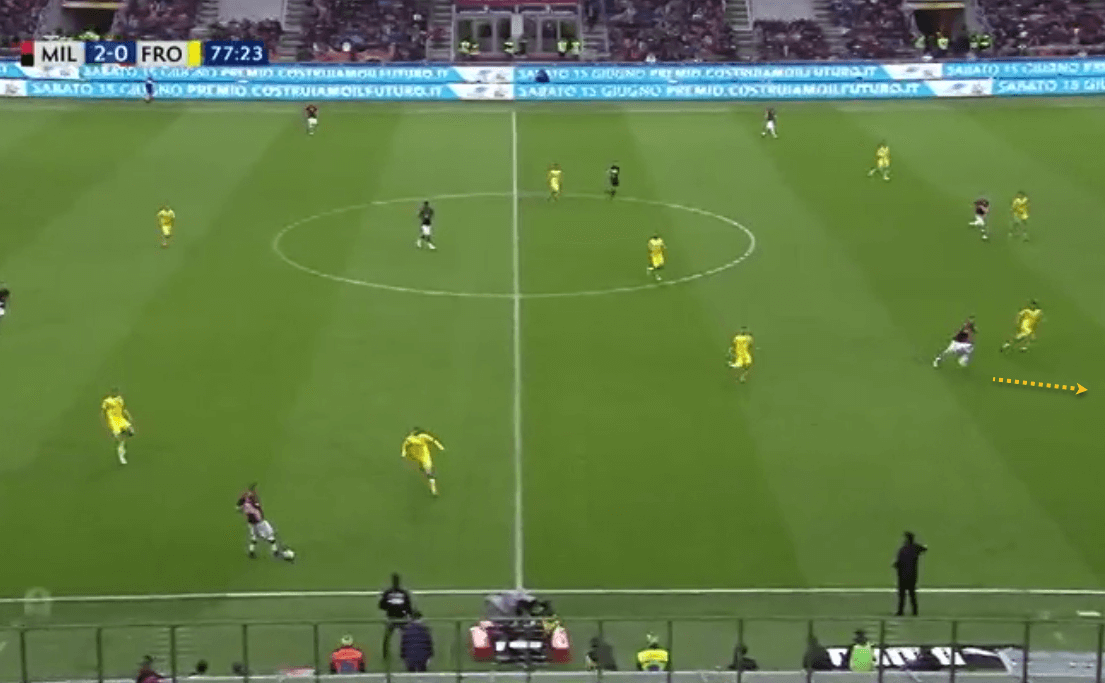
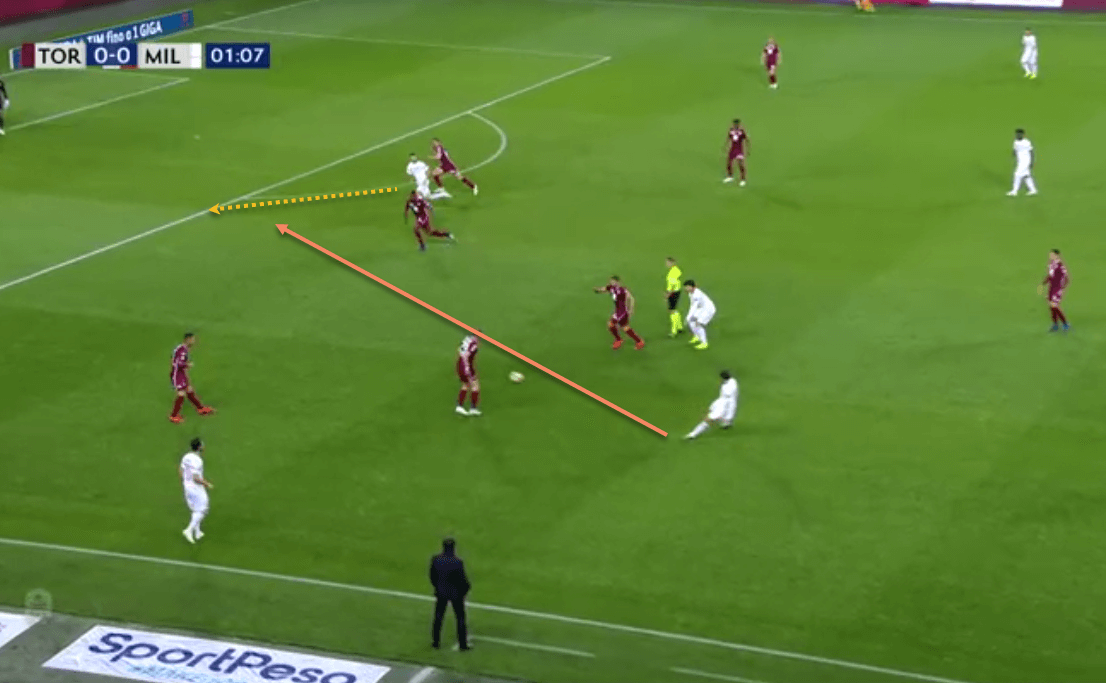
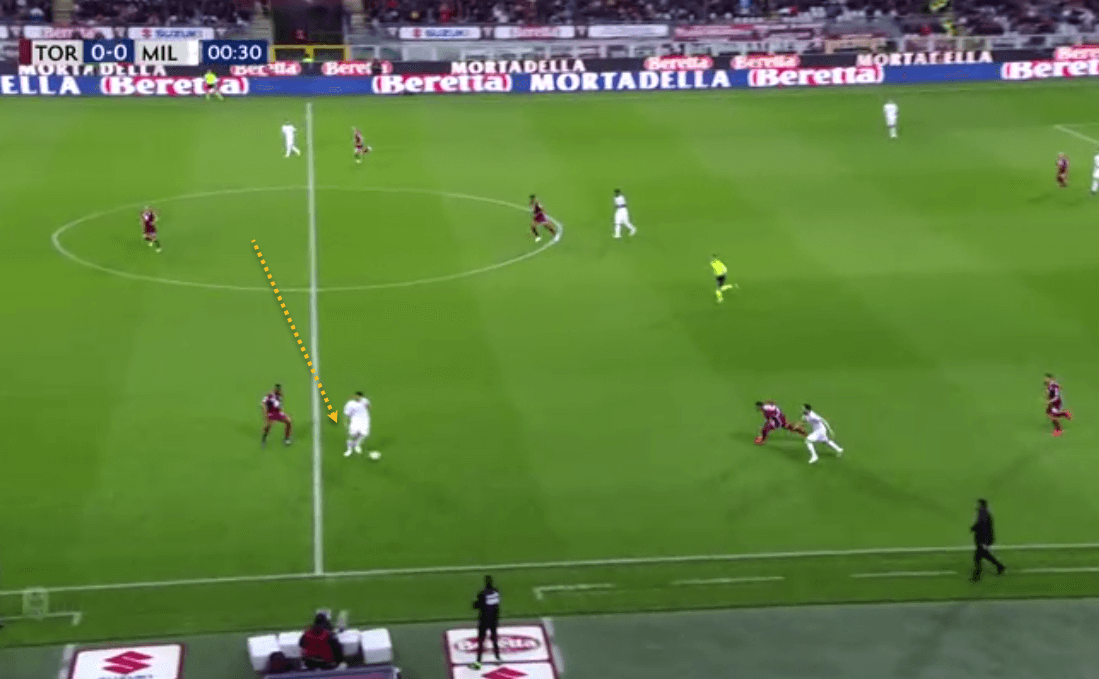
As the images show, Cutrone showed plenty of intelligent movement when playing as the lone striker for Milan. He can thus be expected to dovetail well with either of Wolves’ existing strikers, and it is easy to imagine him playing Jota’s role, in particular.
Conclusion
As this analysis has shown, Nuno built a strong, structured side which did extremely well last season. All of the key protagonists behind last season’s performance still remain at the club, while Nuno has shown no signs of moving away from his trusted tactical template thus far. Wolves have made it to the third qualifying round of the Europa League while using the same 3-5-2 system as last season, and it remains to be seen how the Premier League adapts to the Midlands side next season. Nuno’s tactics and intentions are quite clear, but that does not make stopping Wolves any easier.
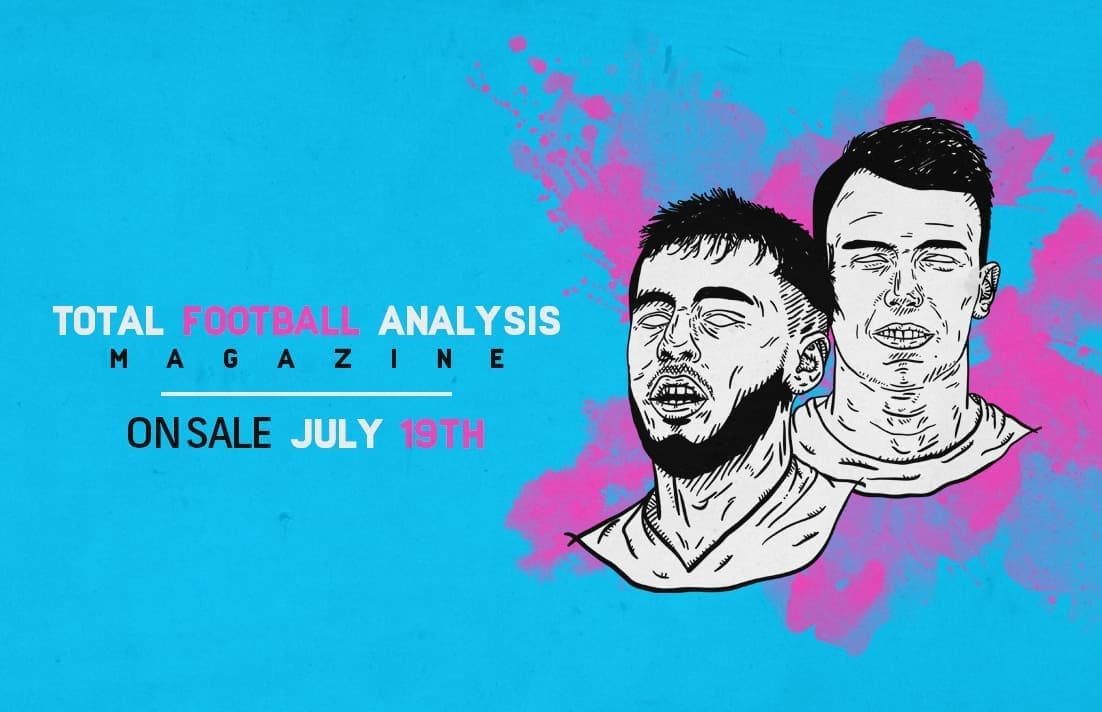
If you love tactical analysis, then you’ll love the digital magazines from totalfootballanalysis.com – a guaranteed 100+ pages of pure tactical analysis covering topics from the Premier League, Serie A, La Liga, Bundesliga and many, many more. Buy your copy of the July issue for just ₤4.99 here, or even better sign up for a ₤50 annual membership (12 monthly issues plus the annual review) right here.





Comments